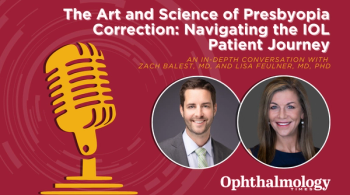
Documentary is chronicling vision-loss experiences
U.S. documentary film director Joseph Lovett he has been progressively losing his vision since glaucoma was diagnosed in him 20 years ago. He is making a film, "Going Blind," to document the effects that blindness has on people's lives and to relay his own experience with the condition.
Key Points
For an ophthalmologist, that reality is the worst part of the job. Ophthalmologists are passionate about saving people's sight, so knowing that little can be done to prevent blindness is a difficult pill to swallow.
From the patient's perspective, the sense of loss is far worse, but having as much information and support as possible is invaluable.
Lovett, who has glaucoma, has been progressively losing his vision since he received the diagnosis 20 years ago. Having spoken with people who had lost their sight or who had lost a significant portion of it, he decided to make a film that not only would help patients and relatives but that also would help the ophthalmology community in its patient-education efforts.
"The stories they told me of adapting to vision loss, of changes in attitudes to their lives from themselves, their families, friends and colleagues, were truly inspiring, and I thought this would make a great film," he added.
Making the film also helps Lovett objectify many of the issues with which he is confronted, he said. "It is sort of like a war photographer whose lens objectifies the danger he or she faces."
Newsletter
Don’t miss out—get Ophthalmology Times updates on the latest clinical advancements and expert interviews, straight to your inbox.


















































.png)


